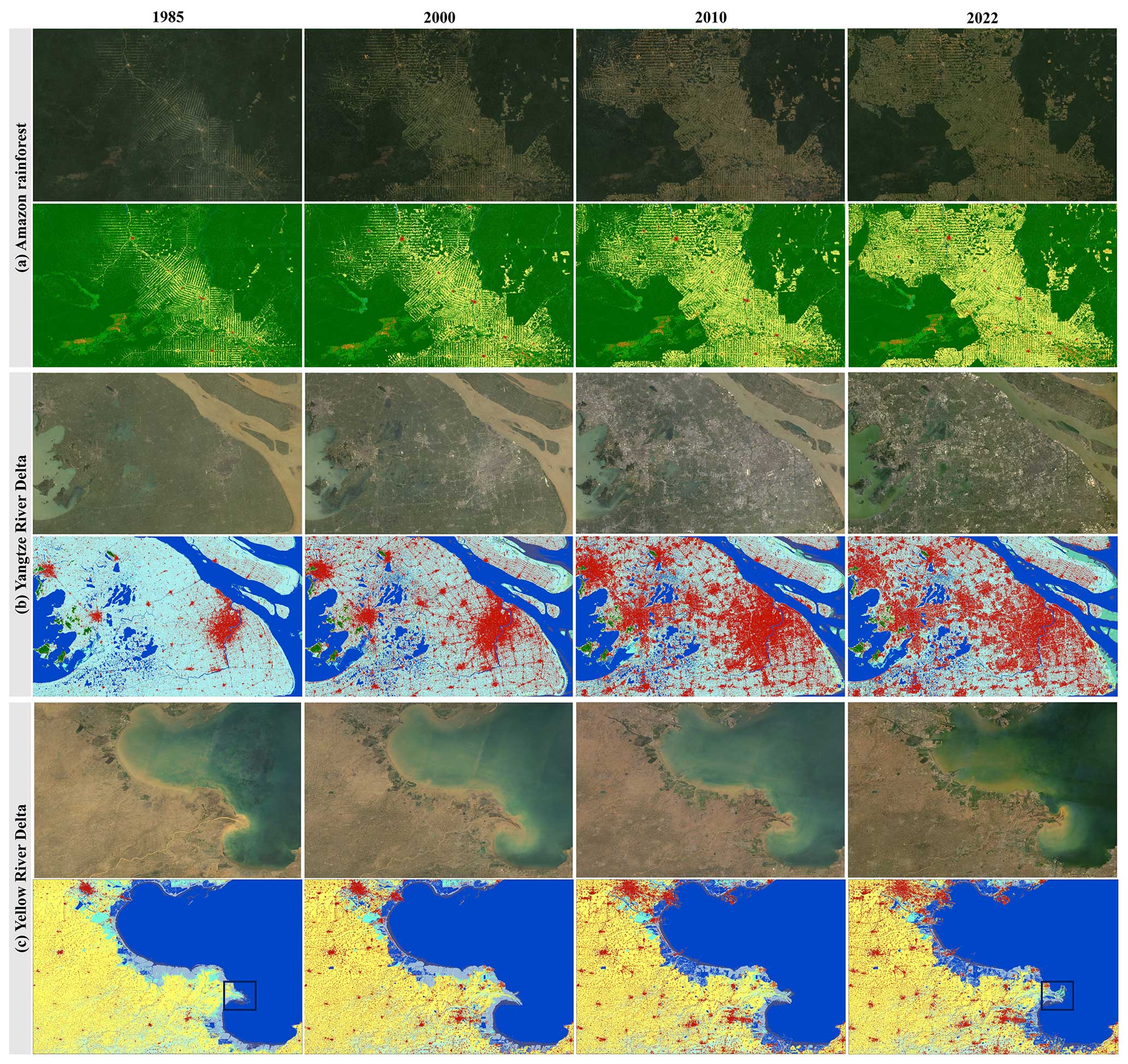Global 30m Land-Cover Dynamics Dataset Set to Sharpen Understanding of Climate Change
Mar 26, 2024
Understanding how our planet's land cover changes over time is crucial for tackling climate change. However, getting detailed, long-term data has been tough. That's where a land-cover dataset called GLC_FCS30D comes in: the latest released dataset offers an unprecedented glimpse into global land-cover dynamics from 1985 to 2022 at a remarkable 30-meter resolution.
The research paper has been published in Earth System Science Data on March 15, 2024. The dataset is also available in CASEarth thematic data system as well as Zenodo.
The dataset, developed by a research team led by Prof. LIU Liangyun from the Aerospace Information Research Institute (AIR) under the Chinese Academy of Sciences (CAS), marks the longest-spanning and most finely classified global 30-meter land cover remote sensing product of this kind internationally.
Over the years, scientists have made great efforts in mapping land cover globally. But there's been a huge gap: long-term, high-resolution data. That's where GLC_FCS30D steps in. Developed using cutting-edge technology and dense-time-series of Landsat imagery, this dataset contains 35 land-cover subcategories, and provides 26 time steps, updated every five years before 2000 and annually after.
Scientists from AIR proposed a novel method by combining the advantages of continuous change detection algorithm, local adaptive modeling and Landsat satellite imagery, which helped them spot where landscapes changed over time and where they stayed the same. Then, they used temporal-consistency optimization algorithms to classify the changing areas and make sure the data was accurate.
They quantified GLC_FCS30D with over 84,000 validation samples from around the world and found it to be impressively accurate, especially in identifying forests and croplands.
They also compared it with other datasets and found it to be consistent and reliable over time-series.
“Based on the findings of the dataset, it can be deducted that over the past 37 years, alterations in forest and cropland have been the primary drivers of global land-cover changes”, said Prof. LIU Liangyun.
There has been a significant decline of forest cover, totaling around 2.5 million square kilometers, while the expanses of cropland have surged, increased by roughly 1.3 million square kilometers”, as emphasized by Prof. Liu.

Three typical enlargements showing the land-cover changes according to GLC_FCS30D from 1985 to 2022 in (a) the Amazon rainforest, (b) the Yangtze River Delta in China, and (c) the Yellow River delta in China. (Image by AIR)
Contact: luyq@aircas.ac.cn



News & Events